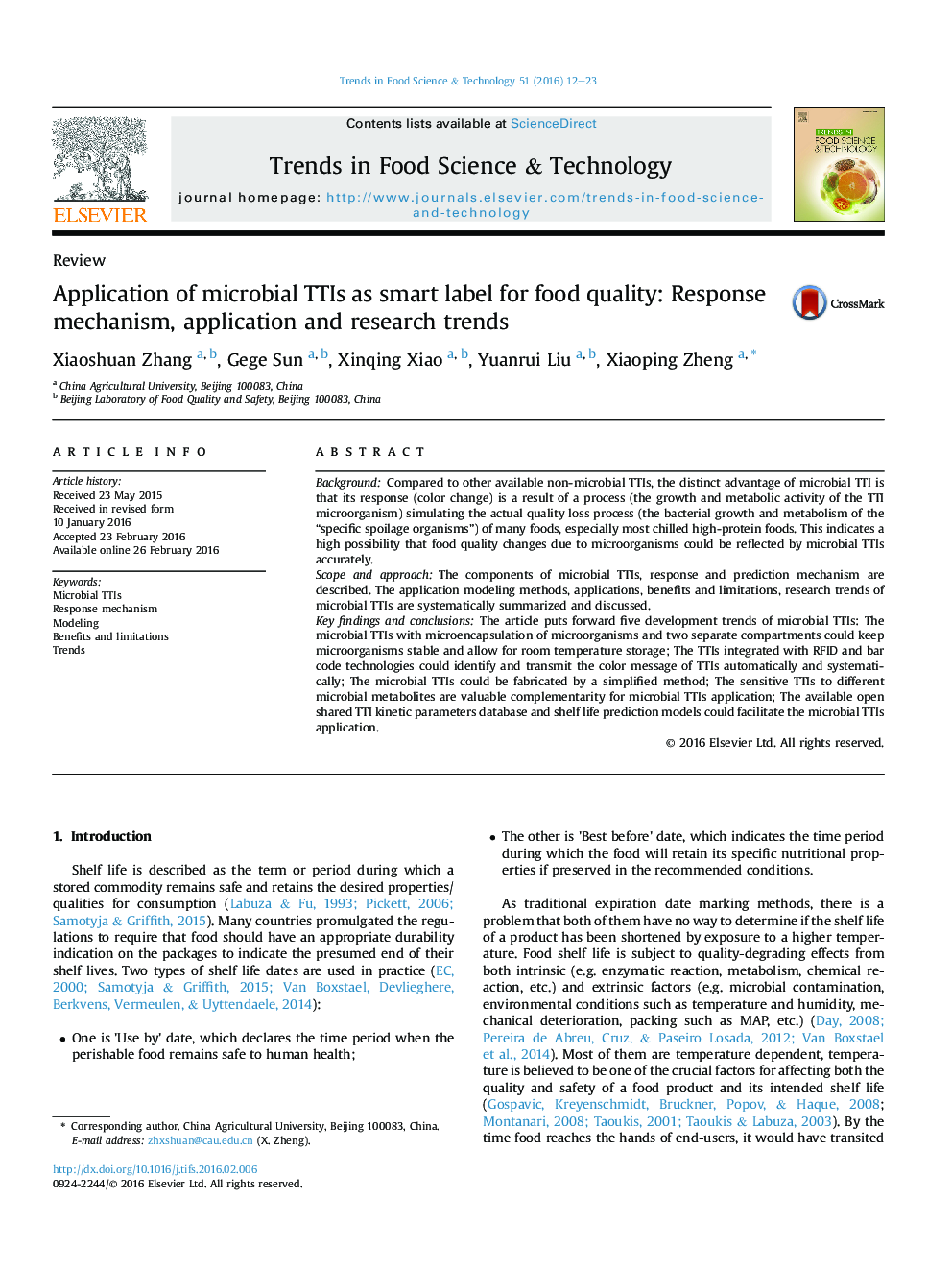| Article ID | Journal | Published Year | Pages | File Type |
|---|---|---|---|---|
| 2098519 | Trends in Food Science & Technology | 2016 | 12 Pages |
•Food quality changes due to microorganisms could be reflected by microbial TTIs accurately.•Microbial TTIs' components, response and prediction mechanism are reviewed.•The application modeling methods of microbial TTIs are discussed.•Applications, benefits and limitations of microbial TTIs are systematically summarized.•Five development trends of microbial TTIs are put forward.
BackgroundCompared to other available non-microbial TTIs, the distinct advantage of microbial TTI is that its response (color change) is a result of a process (the growth and metabolic activity of the TTI microorganism) simulating the actual quality loss process (the bacterial growth and metabolism of the “specific spoilage organisms”) of many foods, especially most chilled high-protein foods. This indicates a high possibility that food quality changes due to microorganisms could be reflected by microbial TTIs accurately.Scope and approachThe components of microbial TTIs, response and prediction mechanism are described. The application modeling methods, applications, benefits and limitations, research trends of microbial TTIs are systematically summarized and discussed.Key findings and conclusionsThe article puts forward five development trends of microbial TTIs: The microbial TTIs with microencapsulation of microorganisms and two separate compartments could keep microorganisms stable and allow for room temperature storage; The TTIs integrated with RFID and bar code technologies could identify and transmit the color message of TTIs automatically and systematically; The microbial TTIs could be fabricated by a simplified method; The sensitive TTIs to different microbial metabolites are valuable complementarity for microbial TTIs application; The available open shared TTI kinetic parameters database and shelf life prediction models could facilitate the microbial TTIs application.
